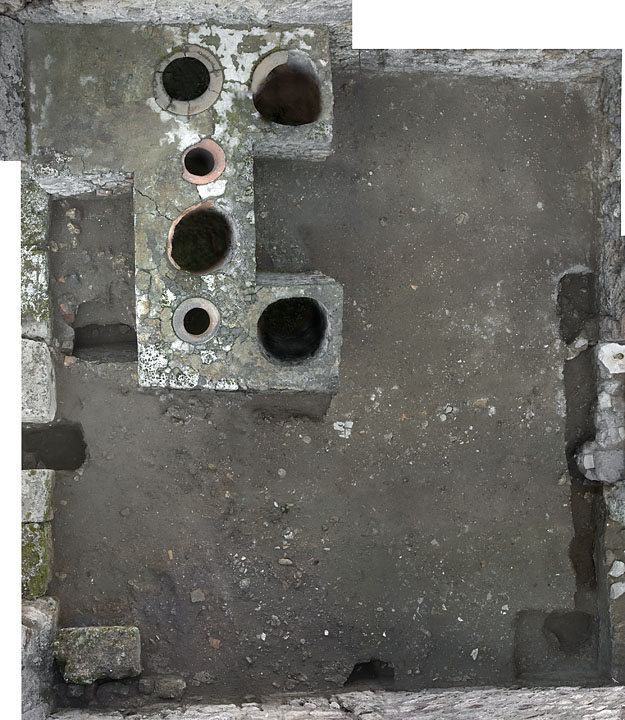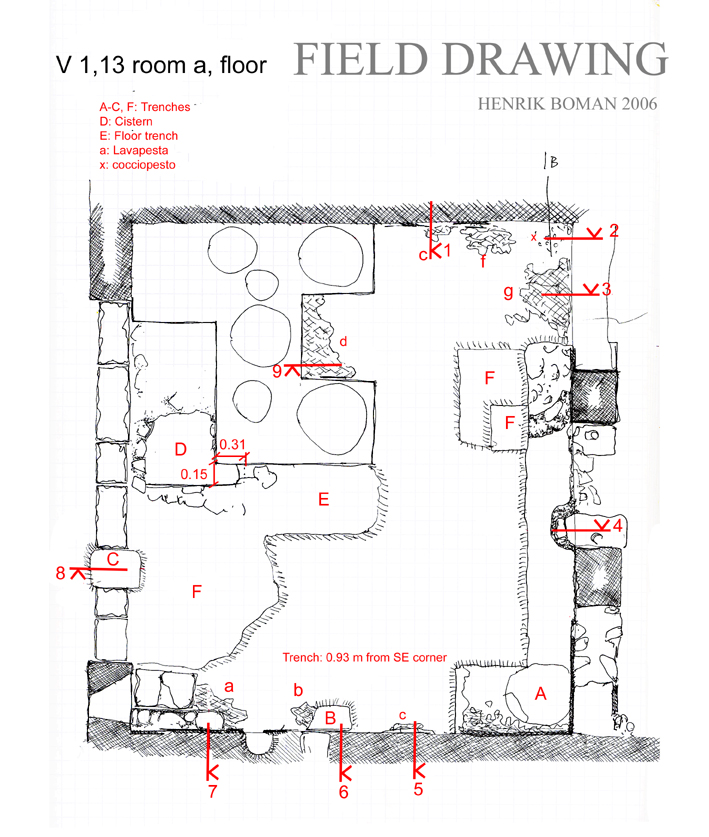Floor
Description
Henrik Boman & Monika Nilsson
The floor in room a was of lavapesta. A few fragments are preserved (by a, b, d, e and f on the field drawing) and an area of cocciopesto (x) is also preserved in the NE corner.
No substantial remains, though faint traces, of a floor can be discerned underneath the counter. The counter is supported by a filling of earth and stone.
Plaster, stones and terracotta, found in level with the preserved floor, indicate that the floor in these parts were destroyed when the plaster fell from the walls. No fragments of the destroyed floor are lying about, indicating that the floor coating was very thin. The remains in the floor level that we see today is, most likely, the original bedding for the floor. The debris found in Trench F indicates that the floor was destroyed before the earth accumulated.
The vessels inserted into the counter extend below floor level and, since the counter is placed upon the existing floor, we have to assume that the floor was cut away, or badly damaged, when the counter was constructed. Since there are indications that the counter was reconstructed at least twice in modern times, the situation with the deep penetrating vessels might be a result of this activity. It could also have been made after severe damage, most likely an earthquake, had been afflicted to the floor.
In the W area of the room, the floor is not only destroyed, but the bedding and earth filling has once been removed. Modern material is found well below floor level, and the threshold is modern, as we have shown by a smaller sondage below one stone that had come loose.


